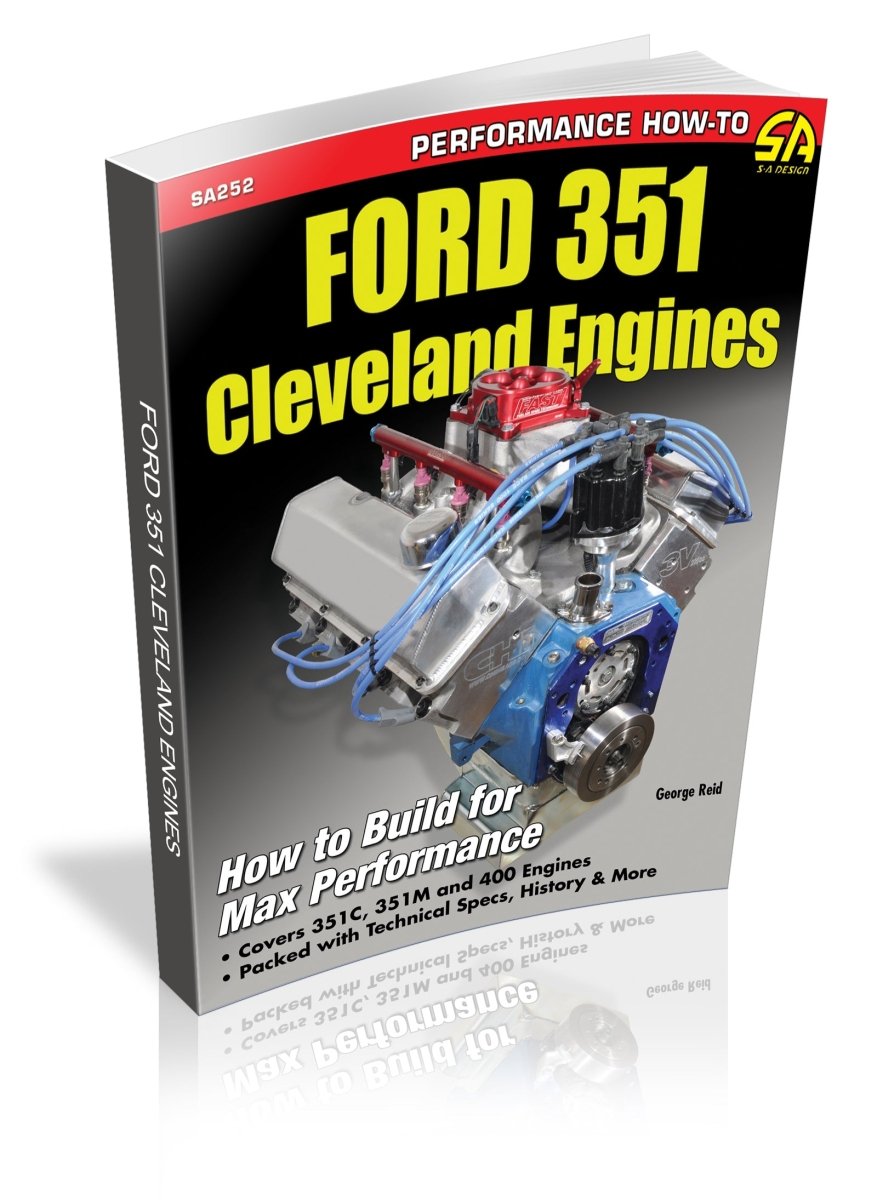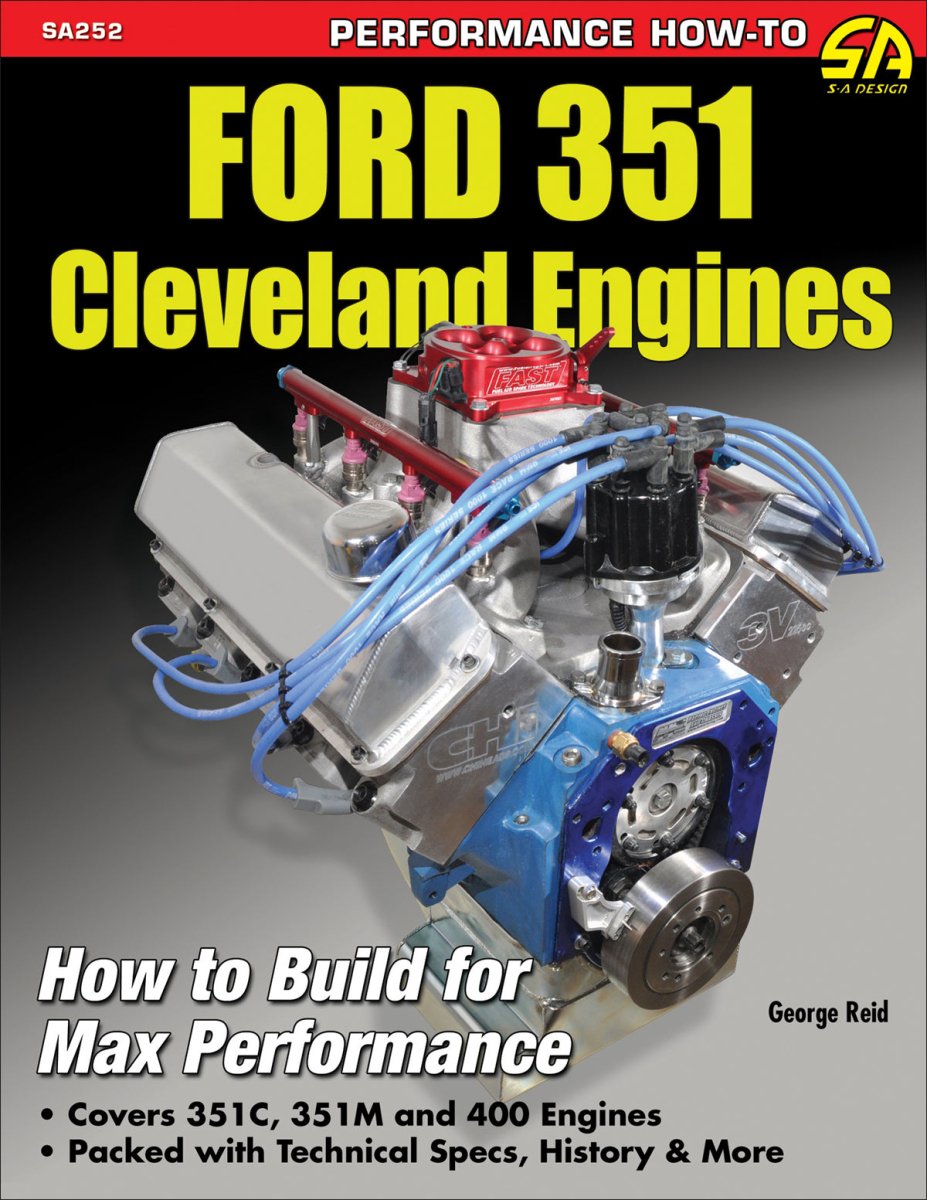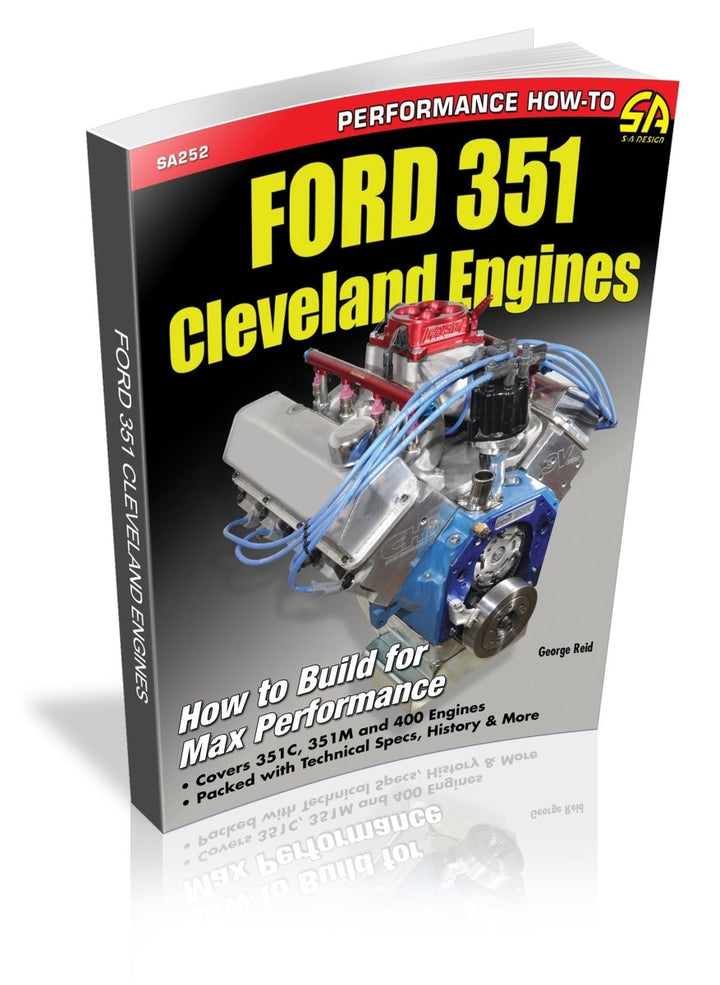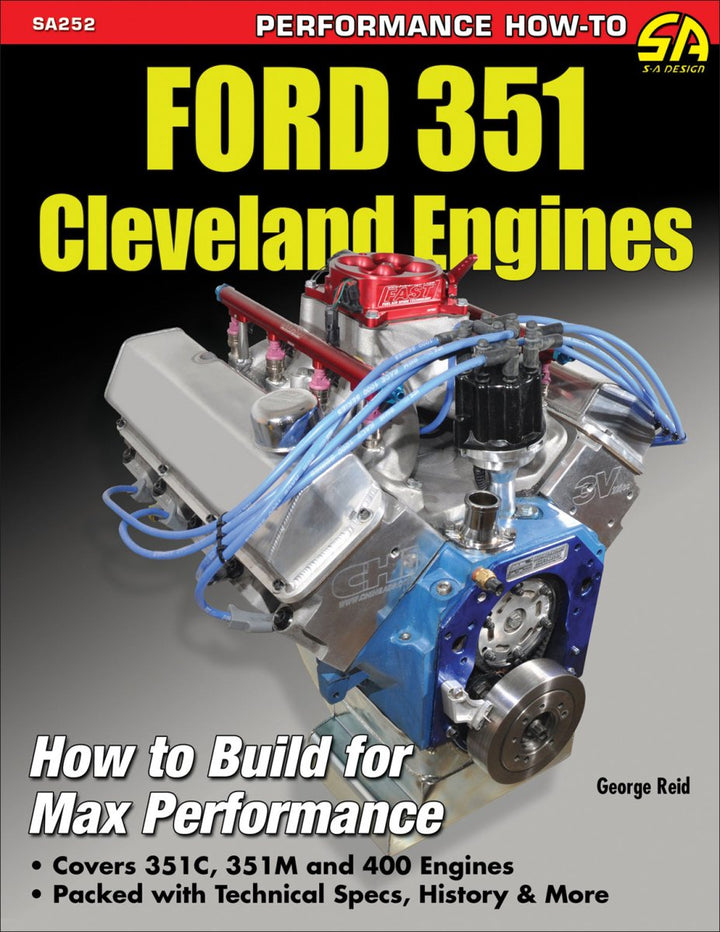Ford's 351 Cleveland was designed to be a 'mid-sized' V-8 engine, and was developed for higher performance use upon its launch in late 1969 for the 1970 models. This unique design proved itself under the hood of Ford's Mustang, among other high performance cars. The Cleveland engine addressed the major shortcoming of the Windsor engines that preceded it, namely cylinder head air flow. The Windsor engines just couldn't be built at the time to compete effectively with the strongest competitor's small block offerings, and the Cleveland engine was the answer to that problem. Unfortunately, the Cleveland engine was introduced at the end of Detroit's muscle car era, and the engine, in pure Cleveland form, was very short lived. It did continue on as a low compression passenger car and truck engine in the form of the 351M and 400M, which in their day, offered little in the way of excitement. Renewed enthusiasm in this engine has spawned an influx of top-quality new components that make building or modifying these engines affordable.
This book reviews the history and variations of the 351 Cleveland and Ford's related engines, the 351M and 400M. Basic dimensions and specifications of each engine, along with tips for identifying both design differences and casting number(s) are shown. In addition to this, each engine's strong points and areas of concern are described in detail. Written with high performance in mind, both traditional power tricks and methods to increase efficiency of these specific engines are shared.
With the influx of aftermarket parts, especially excellent cylinder heads, the 351 Cleveland as well as the 351M and 400M cousins are now seen as great engines to build. This book will walk you through everything you need to know to build a great street or competition engine based in the 351 Cleveland platform.Acknowledgments
Introduction
Chapter 1:
Building Basics
Organization
Compression Ratio
Power Physics
Building a Cleveland Stroker
Chapter 2:
The Block
Cleveland Block Identification
Block Preparation
Fasteners and Threads
Chapter 3:
Rotating Assembly
Crankshaft
Balancer and Flywheel
Pistons
Connecting Rods
Displacement
Cleveland Stroker Kits
Sweat the Details
Chapter 4:
Lubrication
Pump Blueprinting
Oil Control
Chapter 5:
Cylinder Heads
Factory Iron Heads
Head Prep
Cylinder Head Sources
Cylinder Head Innovations
Jon Kaase Racing Engines
Powerheads Performance Engineering
MPG Head Service/Cam Research Corporation
Scott Cook Motorsports
Edelbrock Corporation
Trick Flow Specialties
Pro Comp USA
Air Flow Dynamics
Chapter 6:
Camshaft/Valvetrain
Street Cams
Race Cams
Lifters
Valvetrain
Chapter 7:
Induction
Carburetion
Carburetor Sources
Holley Carburetors
Edelbrock Corporation
Demon Carburetion
Proform
Exotic Ford Carburetion
Weber Induction
Intake Manifold
Electronic Fuel Injection Sources
MSD Ignition
Holley Performance Products
Fuel Air Spark Technology
Nitrous Oxide
Supercharging and Turbocharging
Chapter 8:
Ignition
Quick Fire
Ignition Timing
Spark Knock
Breaker-Point Ignition
Electronic Ignition
Ignition Coils
Distributor Sources
MSD Ignition
Mallory Ignition
Performance Distributors
Crane
Magnetos
Ignition Wires
Distributor Caps
Spark Plugs
Chapter 9:
Exhaust
Header Selection
Calculating Primary Tube Size
Secondary Tubes and Collectors
Equal-Length, Step, and Tri-Y Headers
Exhaust System
Chapter 10:
Break-In & Tuning
Getting Started
Break-In
Exhaust System
After the Break-In
Chapter 11:
Power Builds
400 Horsepower
MCE Engines TMeyer, Inc. 500 Horsepower
Trick Flow Specialties Horsepower Monster 400
Jeff Huneycutt 600 Horsepower
JGM Performance Engineering 400 Proof Positive
Richard Holdener
Source Guide





